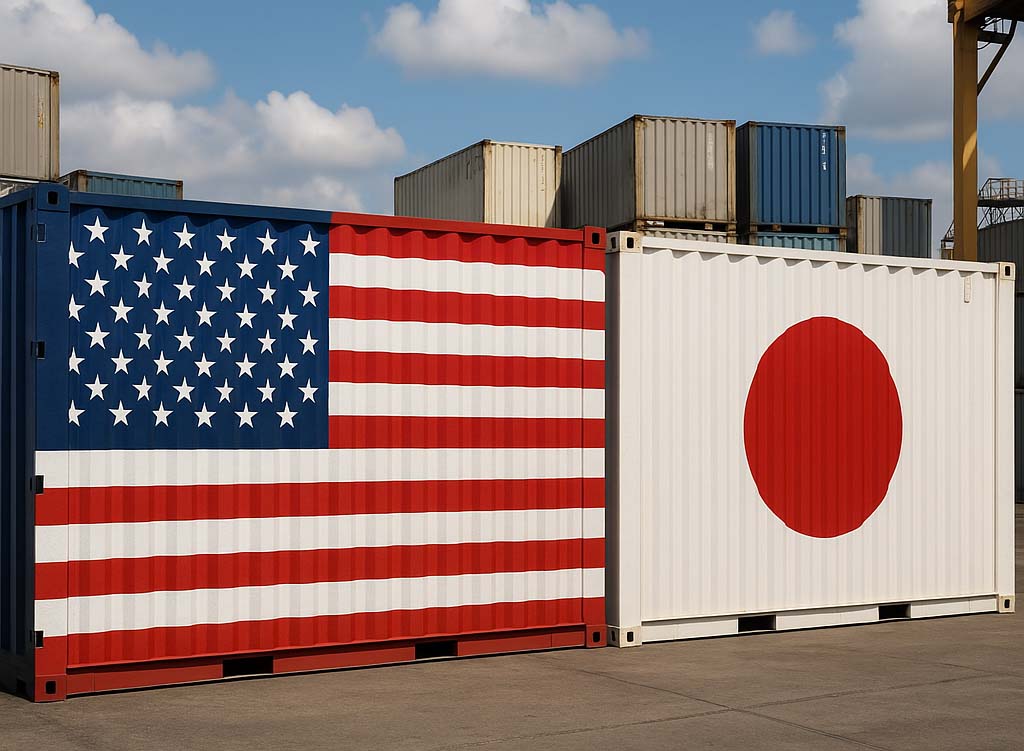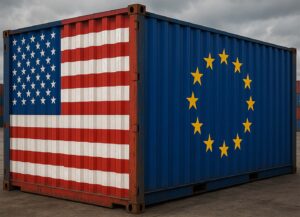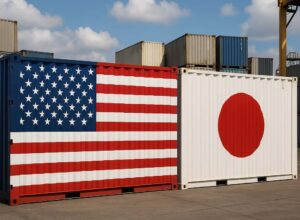A New Chapter in Bilateral Economic Relations
On July 23rd, 2025, President Donald Trump announced what he characterized as a “massive Deal with Japan, perhaps the largest Deal ever made,” marking a significant development in US-Japan trade relations. This comprehensive agreement establishes new frameworks for bilateral commerce while addressing longstanding trade tensions between the world’s largest and third-largest economies.
Key Components of the Agreement
The centerpiece of this trade deal involves a 15 percent tariff on Japanese exports and Japan’s commitment to invest $550 billion in the United States. This tariff rate represents a substantial reduction from the 25% levies that Trump had previously threatened on Japanese exports starting August 1st. The agreement introduces what Trump calls “reciprocal” tariffs, with the 15% rate extending to automobiles, a critical sector in US-Japan trade relations.
A unique aspect of this deal is the profit-sharing arrangement, where the United States will “receive 90% of the Profits” from Japan’s $550 billion investment. Commerce Secretary Howard Lutnick explained the mechanism: “The Japanese will finance projects chosen by the United States, we’ll give it to an operator who runs it and the profits will be split 90% to the United States of America and 10% to Japan.”
Market Access and Sectoral Benefits
The agreement addresses several key sectors that have been focal points of US-Japan trade discussions. Japan will “open their Country to Trade including Cars and Trucks, Rice and certain other Agricultural Products”, representing significant market access gains for American exporters. This is particularly noteworthy given Japan’s historically protective stance on agricultural imports, especially rice, which has cultural and political significance in Japanese society.
For the automotive sector, this deal provides American manufacturers with improved access to the Japanese market while establishing clearer tariff structures. The inclusion of trucks in the market opening provisions could benefit American commercial vehicle manufacturers who have faced barriers in penetrating the Japanese market.
Economic Benefits for the United States
The agreement promises substantial economic advantages for America. The deal is expected to create “hundreds of thousands of U.S. jobs” through both the massive Japanese investment and increased export opportunities. The $550 billion investment represents one of the largest foreign direct investment commitments in US history, potentially spanning multiple sectors and regions.
The 90-10 profit split heavily favors the United States, creating a novel investment structure that could serve as a template for future international agreements. This arrangement ensures that while Japan provides the capital, American interests maintain primary control over project selection and profit distribution.
Advantages for Japan
Despite the seemingly asymmetrical profit arrangement, Japan gains several important benefits from this agreement. Most critically, the 15% tariff rate represents “a meaningful drop from the 25% rate that Trump had threatened”, providing certainty and reducing potential trade disruption for Japanese exporters.
The agreement also strengthens Japan’s strategic alliance with the United States at a time of increasing geopolitical tensions in the Asia-Pacific region. By committing to substantial US investment, Japan reinforces its position as America’s most important Asian ally while potentially gaining influence over US economic policy decisions.
Furthermore, Japanese companies will benefit from direct access to US markets and infrastructure projects, potentially creating opportunities for technology transfer and joint ventures that could enhance Japan’s long-term competitiveness.
Market Response and Implementation
Asian markets responded positively to the announcement, with Japan stocks jumping over 3% following Trump’s announcement, indicating investor confidence in the deal’s potential benefits. This market reaction suggests that investors view the agreement as favorable for Japanese businesses despite the tariff structure.






